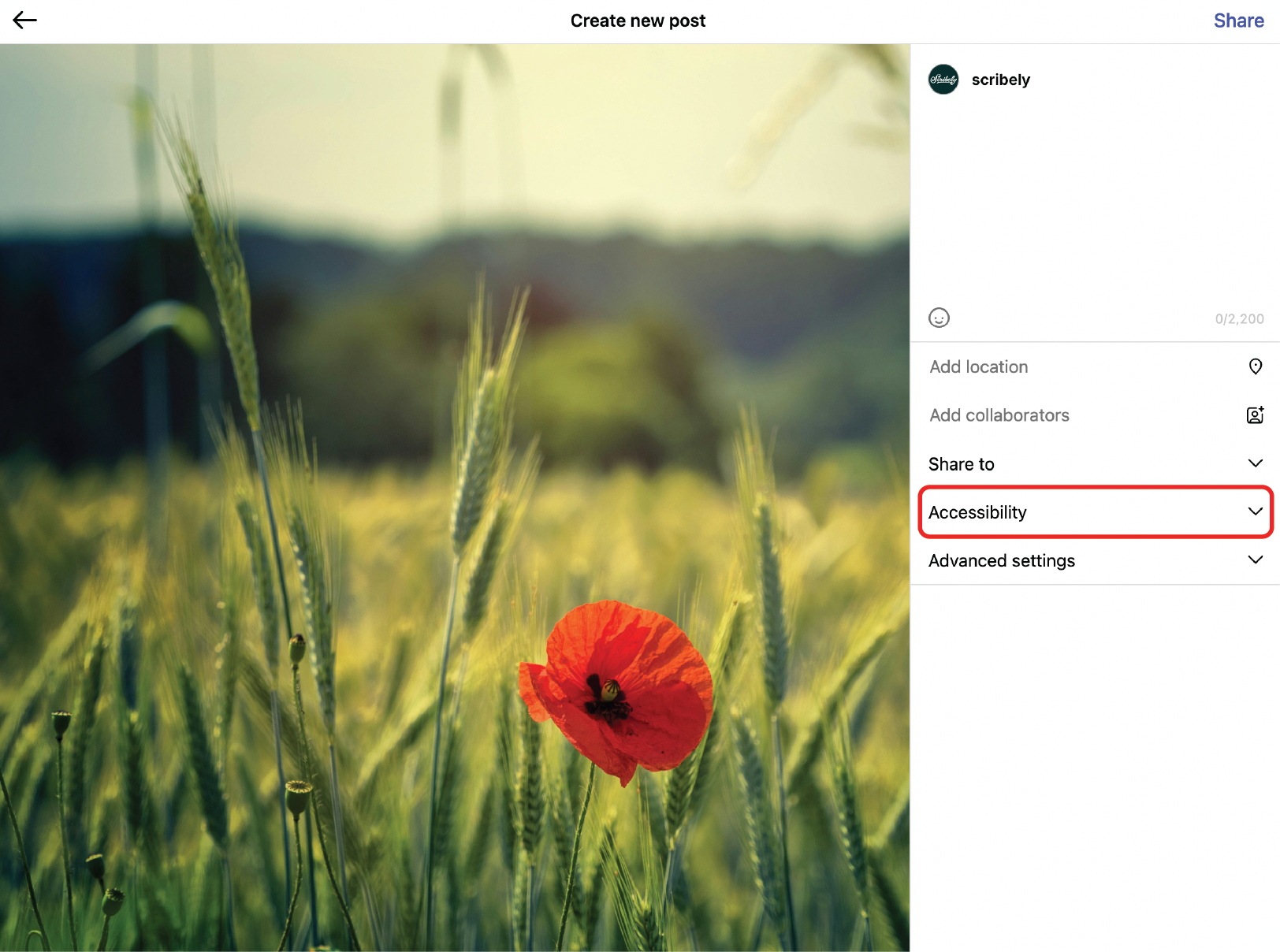Introduction
This blog outlines four-stages for building resilient alt text workflows that produce quality descriptions. Covering Authoring, Storage, Implementation, and Governance, it highlights best practices for creating, managing, delivering, and maintaining alt text at scale. By following this workflow, organizations can ensure their alt text production is quality, context-aware, and scalable, enhancing accessibility while supporting broader business goals.
Strong alt text workflows are foundational to creating accessible digital experiences. At Scribely, we break this process into four key stages: Authoring, Storage, Implementation, and Governance. Each phase plays a crucial role in ensuring alt text is not only created but maintained, adapted, and scaled across complex digital ecosystems.
Stage 1: Authoring
Strong alt text begins with a solid authoring workflow, yet this is often where many accessibility efforts falter. A common reason for failure is the lack of a clearly defined and coordinated process built into standard content workflows.
Authoring is much more than writing descriptions. It is a structured process that defines who writes alt text, how it is captured and reused, and how context is identified across teams and systems. A successful authoring workflow ensures that alt text is written efficiently, consistently, and with a clear understanding of each image’s purpose.
Key practices include:
- Document the process: Clarify who writes what, when, and where the alt text is stored. Writers need access to briefs, context, previous versions, and feedback to work effectively.
- Assign ownership wisely: Different teams contribute unique insights. Product and design understand intent, marketing knows the audience, and social media grasps tone and engagement. Collaboration produces higher-quality alt text.
- Start at asset handoff: Begin drafting alt text as soon as an image is approved. This may be a baseline description that can be refined later as the image is adapted for various channels.
- Map contexts: Recognize that images are reused across web, email, social media, and print. Alt text should follow these pathways, allowing for necessary variations while maintaining consistency.
- Capture intent early: Define the image’s role upfront, whether it is informational, emotional, or functional. Intent drives relevance and meaningful descriptions.
Supporting authoring is a centralized style guide containing best practices, tone guidelines, and clear examples. While AI tools can assist by drafting alt text, tagging images, and classifying purposes, they cannot replace human insight. Without access to context, AI tends to generate generic or inaccurate descriptions requiring heavy editing. The goal is to equip AI with the right inputs — including metadata, intent, and context — so it becomes a valuable partner in the authoring process.
Well-defined authoring transforms alt text from a last-minute task into an integral part of content creation. It sets the foundation for success in storage, implementation, and governance, helping accessibility become a natural part of digital production.
Stage 2: Storage
Alt text is only as effective as the systems that store and manage it. Even the best authoring fails if storage systems are not designed to hold, manage, and distribute alt text properly. In many organizations, alt text is either trapped in spreadsheets or hidden inside systems that treat it as a single-use field — limiting its value.
Storage refers to the data infrastructure supporting alt text throughout its lifecycle. Commonly this includes Digital Asset Management (DAM), Product Information Management (PIM), or Content Management Systems (CMS). However, these platforms often lack the flexibility needed to manage alt text effectively, typically allowing only one static version without support for localization, personalization, or contextual adaptation.
A modern storage approach treats alt text as structured, reusable content. Key capabilities include:
- Managing localization: Store multiple versions to support different languages and regions.
- Adapting to context: Allow description variations based on use cases, such as product pages versus social media posts.
- Enabling personalization: Support dynamic applications like chat interfaces, visual search, and audience segmentation.
To achieve this, organizations should:
- Centralize storage in a single source of truth, often at the asset level within DAM or PIM systems. This prevents duplication and ensures consistency.
- Align storage design with authoring workflows, mapping metadata fields and versioning to how alt text is created and updated.
- Design storage with implementation needs in mind, supporting current publishing workflows and future automation, personalization, and AI systems.
When storage is designed with these principles, alt text becomes searchable, portable, and future-ready. It extends beyond accessibility, adding value for SEO/AEO, marketing, analytics, and user experience.
Storage sits at the critical midpoint between authoring and implementation. It must capture the richness of authored descriptions and store those assets accurately and consistently wherever needed.
Stage 3: Implementation
Implementation is where authored and stored alt text reaches the end use case — appearing on websites, apps, e-commerce platforms, and marketing channels. This phase is often the most complex and overlooked, but it is critical for ensuring alt text is delivered in the right context and format.
Key challenges include:
- Complex system pathways: Alt text passes through multiple systems such as CMS, DAM, design tools, and automation platforms. Without clear mapping, alt text can be lost or degraded. Integrations must make its movement predictable, traceable, and consistent.
- Contextual variation: One alt text description rarely fits all use cases. Maintaining a central source of truth while allowing controlled variations through context-aware rules is essential.
- Feedback loops: Changes made downstream (for SEO/AEO, localization, or branding) often do not flow back upstream. Closing these loops ensures refinements persist and duplication is avoided.
- Technical limitations: Some platforms lack proper fields or APIs for alt text. Implementation often requires building database rules, advocating for improvements, or automating delivery in ways that maintain quality and structure.
- New versus existing content: Many workflows focus only on new content, but legacy images also require attention. Effective implementation supports front-end application at publishing as well as back-end automation where alt text flows directly from data systems.
When done right, implementation transforms alt text into a scalable, portable asset that supports accessibility, SEO/AEO, personalization, analytics, and AI readiness. It ensures the investment in authoring and storage pays off across every channel and enables ongoing adaptation and improvement.
Stage 4: Governance
Governance ensures alt text quality, consistency, and sustainability over time. Without clear oversight, even the best authoring, storage, and implementation workflows can degrade — leading to inconsistent quality, lost accountability, and diminished accessibility outcomes.
Governance is built around ownership, measurement, and continuous improvement. It connects all stages of the alt text lifecycle, enabling teams to track creation, validation, adaptation, and maintenance at scale.
Federated ownership model:
A strong governance strategy starts with a federated approach:
- A central Accessibility Center of Excellence sets policies, standards, tooling, training, and support.
- Distributed content teams apply these standards in daily workflows.
This balance supports both standardization and flexibility, allowing different teams to operate efficiently while aligning with accessibility goals.
Clear roles are vital:
- Content authors create alt text.
- Reviewers such as accessibility experts or trained editors validate quality and flag issues.
- The CoE monitors trends, manages platform updates, and ensures ongoing education.
Human-in-the-loop quality assurance:
Embedding expert review directly into workflows ensures both human- and AI-generated alt text meet high standards. Feedback loops refine content and help AI models become more context-aware and aligned with brand voice.
Automated tools monitor alt text at scale, flagging common issues such as missing descriptions, overly short or vague text, and repetitive file name descriptions.
Measurement and scoring:
Mature governance relies on meaningful KPIs such as:
- Percentage of images with context-aware alt text
- Reduction in accessibility audit failures
- SEO/AEO improvements linked to alt text
- Turnaround time from image creation to description
- Consistency of alt text reuse
These metrics provide insight and help connect accessibility efforts to business outcomes like brand trust and risk reduction.
AI governance and future-proofing:
As AI becomes more involved in alt text creation, governance must address ethical concerns. This includes running bias audits, supplying rich training data, and keeping humans involved for accuracy and cultural nuance.
Governance frameworks should also evolve alongside standards like WCAG 3.0, shifting from check-the-box compliance to intent-based, user-centered accessibility.
Global and local needs:
For multinational organizations, governance must include localization. AI can assist with translation, but human reviewers ensure alt text is culturally appropriate, relevant, and clear in every language and region.
Conclusion
Building resilient alt text workflows is essential for creating accessible, meaningful, and consistent digital experiences. By focusing on the four key stages—Authoring, Storage, Implementation, and Governance—organizations can ensure that alt text is not only written well but also managed, delivered, and maintained with quality and scalability in mind.
Each stage plays a critical role in transforming alt text from a compliance checklist item into a valuable content asset that supports accessibility, SEO/AEO, personalization, and more. With clear ownership, robust systems, and ongoing oversight, alt text workflows become sustainable and adaptable to evolving standards and technologies.
Ultimately, investing in resilient, quality-driven alt text workflows empowers teams to deliver richer experiences for all users and reinforces accessibility as a fundamental part of digital content creation and management.

Check out Scribely's 2024 eCommerce Report
Gain valuable insights into the state of accessibility for online shoppers and discover untapped potential for your business.
Read the ReportCite this Post
If you found this guide helpful, feel free to share it with your team or link back to this page to help others understand the importance of website accessibility.










.jpg)





.jpg)



























_edited_6x4-p-1080.jpeg)


